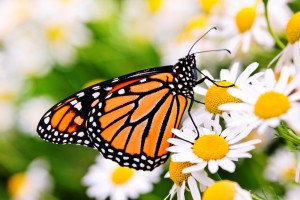
Most ten-year-olds can tell you the stages of development for a butterfly or a frog. A butterfly begins as an egg, becoming a larva, a caterpillar, then a chrysalis emerging into a butterfly. A frog starts as an egg, hatching into a tadpole, turning into a polliwog, at last transforming into an adult frog. At each stage of change the frog and butterfly have differing needs for nourishment and environment.
As human beings, we also go through distinct changes, perhaps not with the physical drama of a butterfly or frog, but with identifiable changes in behavior with indicated physical and psychological needs. Too many times children are treated as though they are miniature adults. The human being, though, does not fully reach adulthood until around the age of twenty-four years.
In the infant who cannot feed him or herself, it is easy for us to observe the swift changes of the first two years of life. By the age of three years, a child learns to crawl, walk, talk, and eat table food, along with a multitude of self-care skills that help the child become more independent from caregivers.
Unfortunately for many of our children, this early independence leads adults to think that children three years and older are tiny grown-ups.
Many of us are more aware of the requirements of cocoons and polliwogs than children’s needs between the ages of three to six years.
The three to six-year-old is in a period of unconscious learning, absorbing information about his or her time and place from every aspect of the immediate environment. The child is unaware of learning and chooses to place his or her attention on activities that are repeated frequently. The child watches, listens, copies others and learns.
This style of learning creates the following distinct needs for the young child:
- A need for an environment rich in language and experiences as vocabulary and story-telling capabilities are developed.
- A need to use his or her hands to connect the body and the brain to the realities of life.
- A need to create an emotional foundation built on the love, trust and respect of surrounding adults.
- A need to repeat activities in order to develop self-mastery and independence.
- A need for direct guidance on how to interact with people–within the family and the larger social network of school, church and other activities.
- A need for opportunities to refine the five senses of hearing, seeing, tasting, smelling and touching and to connect precise language to those experiences.
- A need for truthful and accurate information as the young child doesn’t have a wealth of experiences to discern between fact and fiction, fantasy and reality.
- A need for movement as the brain requires the body’s motions for optimum neural development.
- A need for opportunities to exercise his or her will by having freedom within limits that enlarge as skills grow.
During this period of building foundational skills, the child is laying the groundwork for the adult he or she will become. The child is father to the man.
As the first tooth is lost and adult teeth emerge around the ages of six or seven years, the child begins a different phase of development. At this age, we notice that the baby face look of the younger child is replaced by a taller thinner appearance.
The older child wants opportunities to go out into the world and step outside the familiar circle of family, school and church; desires novel experiences; is concerned with friends and working in a group instead of focusing on personal skills; wants to know why and problem solve; is concerned with learning about right and wrong; desires an idea of the big picture of the universe.
Observe the differences between a four-year-old and a seven-year-old and you should see creatures as different as a larva to a caterpillar, or a tadpole to a polliwog.
We’d make sure a caterpillar had the right leaves to eat, and a polliwog had a pond. Let’s use our influence as adults to create a world where our children have the opportunities to grow and change in the time specific ways children need.


Being a Montessorian I totally agree with the article!
Prema,
Thanks!
As always, beautifully said and perfectly thought out. It drives me to want to learn more about the adolescent and how each stage of development has it’s cravings for learning. How can I read more about children developing through age 24? Anyone you know?
Missy,
Dr. Montessori has a chapter entitled “The Functions Of The University’ in From Childhood To Adolescence. I think what she has to say about this time of life extends to the sub-stage of the 18 to 24 year-old.
The work of this age is about learning to make a living and learning to make a life. Developing economic independence and philosophical/moral independence and equilibrium are the main needs.
On page 90 she writes: He who arrives at the university has left behind him childhood and adolescence: he is a formed person. A great part of his social destiny, of the success of his studies will depend on how he was formed.
What interests him now is the “mission of humankind”.
As I’m thinking about books about this age of 18 to 24, I can’t think of any to recommend that describe the needs of this age.
A big area for exploration!
It’s beautifully and clearly explained.
Bhavana,
Thank you. Glad you enjoyed the piece.